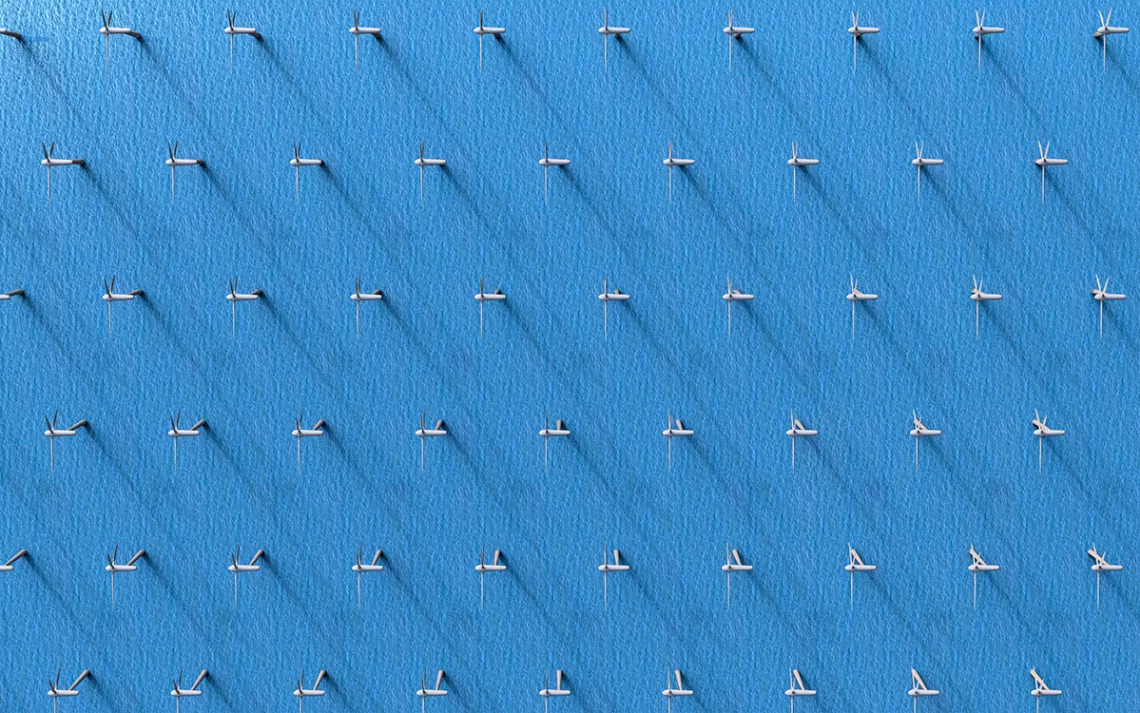What Do We Do With Too Much Renewable Energy?
It's not easy to turn off a wind turbine, but the electricity has to go somewhere

Photo by tuomas tifonimages/iStock
We know that green energy is good, but can there be too much of a good thing?
For instance, with unusually low demand during the COVID-19 lockdown, the United Kingdom’s power consumption fell by nearly 20 percent this summer. That caused a surge in unused green energy. In May, the National Grid asked for emergency powers to switch off solar and wind farms and warned of blackouts and a “significant risk of disruption to security of supply.”
Britain is certainly not alone. As the transition to renewable energy gathers pace, early adopter regions like Germany, Denmark, and California are finding that, counterintuitively, too much green power poses problems for their energy supply. Electricity, when generated, must be used instantaneously, and therefore the amount of generation and the amount of demand must be balanced perfectly at all times. This can cause surges in the grid unless there are means of storing or diverting this excess.
Finding that perfect balance is complicated at the best of times, says Cisco DeVries, an energy expert and the CEO of OhmConnect as well as a former aide to the secretary of energy during the Clinton administration. It’s far worse when you throw in sudden surprises such as a global pandemic. Suddenly, people are consuming more power at home, but factories are standing empty. “We’re changing when and where we’re using [energy], and we’re doing it in a way that’s never been done before,” he says. Add the challenges of disconnecting solar power plants and wind farms to changing use patterns, he notes, and you’ve “exponentially complicated the balancing of supply and demand.”
The problem of excess energy from renewable sources is not a new one, and several ways of tackling it already exist. One, says Jim Watson, professor of energy policy and research director at the University College London’s Institute for Sustainable Resources, is pump storage. “We have these big hydro stations where they’ll basically pump water up a mountain when the electricity’s cheap and then use it to generate electricity very quickly when we need it, such as the tea time peak.”
Another strategy is battery storage. In 2017, the British government allocated £246 million (more than $300 million) of funding for battery research, and companies such as Tesla have been developing powerful batteries for people’s homes that would connect to the grid and provide storage for excess energy.
DeVries feels that while batteries have gotten a fair bit of attention on both sides of the Atlantic, there are better ways to go. People like the idea of batteries, he says, “because electricity’s hard to get your head around. With a battery, you can put your arms around it. It’s a real thing with energy in it and people really like that.” Batteries have their place, he says, but they’re only one part of the solution.
Electricity customers could do a lot to remedy the problem by being flexible in their demand, limiting their electricity use when the grid needs them to. That’s not yet widely done in homes but is already common in commercial and industrial enterprises.
Another solution is to broaden a grid’s reach. “If we built more connections to other countries,” Watson says, “it’s easier to balance supply and demand across a larger area because the wind might be blowing at different times, or the sun might be out at different times in different places.” This is already happening in several regions: Germany, for instance, is able to export electricity to Austria, Switzerland, the Netherlands, and others.
Electric vehicles can serve as energy buffers, using cheap bidirectional chargers. Energy overproduction could be used to fuel transportation and then be stored and returned to the grid when demand is at its highest. Overproduction can also power vehicles via hydrogen; in the UK, such projects are rapidly being greenlit, such as a planning application by green energy company Ryse to build the UK’s largest electrolyser at Herne Bay in Kent, which will produce up to 10 tons of hydrogen a day, enough to supply a new fleet of fuel cell buses in London. Hydrogen buses have been or will soon be introduced in Belfast, Birmingham, Edinburgh, Manchester, and many other UK cities as well.
At present, most hydrogen used in the UK is still made from natural gas, which means it continues to create greenhouse gas emissions. By using power from wind farms when it’s not needed by the grid, Ryse will ensure that its hydrogen is green.
The coronavirus pandemic has highlighted an issue borne out of the success of renewables, one that governments weren’t yet ready to deal with. What they need to do in the short term, says DeVries, is put their weight behind simple solutions like pumping water, flexible pricing, and existing battery storage. “There’s nothing exciting about pumping water up a hill,” he says, “but it works, and we can do it right now.”
 The Magazine of The Sierra Club
The Magazine of The Sierra Club



